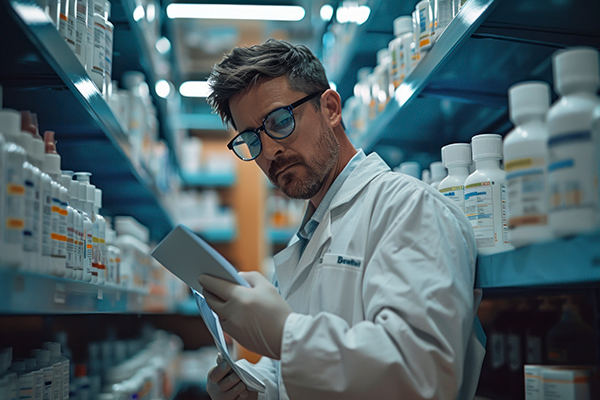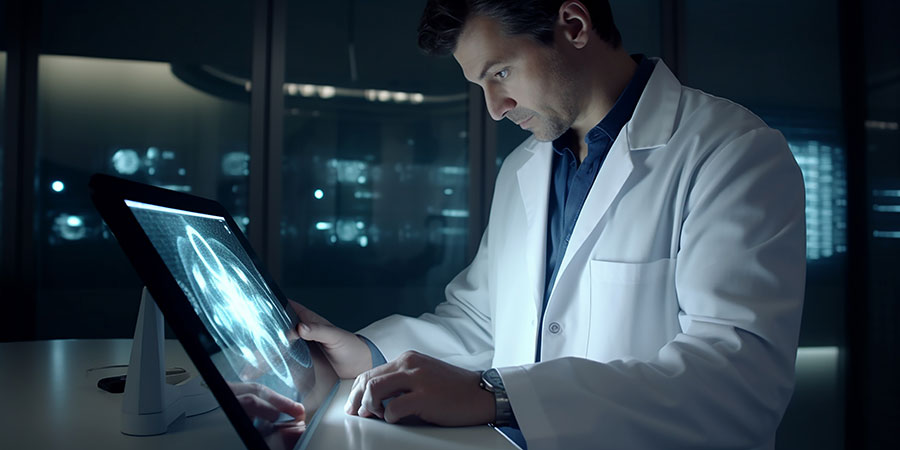Upgrading Food Safety Labs by Speeding Up Detection of Salmonella, Listeria, and Mold
26-Mar-2025
Food safety in the U.S. is a serious issue that affects millions of people each year. In a world of rising complexity of food supply systems and consumers demanding fresh and processed foods, more advanced food safety systems have never been more acutely needed. Among some of the largest food safety threats are pathogens such as Salmonella and Listeria and contamination by mould. These foreign substances can produce serious illness, recalls, and even death, so their quick identification is one of the highest priorities for food safety laboratories throughout the country. By investing in advanced technologies for rapid detection of Salmonella, Listeria, and mould in food safety labs, the U.S. can be ahead in protecting public health and the integrity of its food supply.
The Increased Demand for Rapid Detection
Traditional tests for the detection of Salmonella, Listeria, and mould in foods are typically culturing tests that would take weeks or days. In a rapidly moving industry where minutes are as valuable as a currency in which thousands of people fall ill and thousands of dollars are lost, these techniques are not adequate. The rapid detection technology, however, can detect contaminants within hours and respond more rapidly to threats. This is especially the case in America, where foodborne illness infects a whopping 48 million individuals annually, as reported by the Centers for Disease Control and Prevention (CDC). Thanks to rapid detection systems, food safety labs can help lower the threat of contamination substantially and shield consumers from dangerous pathogens.
Salmonella: An Ongoing Threat
Salmonella is among the leading causes of food poisoning in the United States, accounting for more than 1.35 million reported infections annually. Salmonella is readily available in poultry, eggs, and fruits and vegetables, thereby a general worry for both producers and consumers of food. Conventional detection procedures of Salmonella are by culturing samples on agar plates and waiting for five days or even longer to receive results. However, with recent advances in molecular testing technology, including polymerase chain reaction (PCR) and immunoassays, the detection of Salmonella is no longer the same. Those quick detection assays are capable of determining whether or not Salmonella is present in hours, which allows food safety labs to act fast and take tainted products off the shelves.
Listeria: A Silent but Deadly Contaminant
In contrast to Salmonella, Listeria is less prevalent but much more lethal, with a maximum of 20% of individuals infected with the disease dying. The disease is especially life-threatening to pregnant women, the elderly, and individuals with compromised immune systems. Listeria is generally in ready-to-eat foods such as deli meats, soft cheese, and packaged greens, making it the largest priority of a food safety laboratory. Conventional methods of detecting Listeria are likewise labour-intensive, but new technologies for rapid detection have been the game-changers. Techniques like next-generation sequencing (NGS) and biosensors can detect Listeria in real time, equipping food safety laboratories with the potential to stop outbreaks and protect high-risk groups.
A Little-Understood but Serious Hazard
While Salmonella and Listeria are usually the catchphrases when food safety comes up, mould contamination is also a critical concern that cannot be ignored. Mold can produce mycotoxins, harmful metabolites with dire health effects, including cancer and immunosuppression. Mold contamination of grains, nuts, and dried fruits is a particular concern in the U.S. Conventional detection has been by culturing and visual inspection, time- and error-wasting techniques. Rapid detection technology, including fluorescence-based assays and DNA sequencing, is a better, faster option. These technologies can detect mould and mycotoxins in minutes, enabling food safety laboratories to react to contamination before it becomes a gigantic problem.
The Role of Technology in Enhancing Food Safety Laboratories
The application of quick detection technologies in food safety laboratories is transforming the identification and regulation of contaminants such as Salmonella, Listeria, and mould. Machine learning, AI, and automated systems are also increasing the capabilities of these labs so that more samples are analyzed in bulk with increased efficiency and accuracy. At the same time, in the U.S., government institutions such as the Food and Drug Administration (FDA) and the U.S. Department of Agriculture (USDA) are also providing incentives for the use of these technologies in the form of funding and approvals. With investments in rapid detection technologies, laboratories of food safety can not only become more operationally efficient but can also enhance the overall safety of the food chain.
Quick detection of Salmonella, Listeria, and mold is a vital step in advancing food safety in the United States. With the food industry becoming increasingly advanced, so should its methods of becoming safe. By the use of newer technologies, food safety laboratories can remain ahead of threats and defend consumers against the incapacitating effects of foodborne illness. The United States has traditionally been at the forefront of food safety innovation, and the adoption of rapid detection systems is proof of its dedication to public health. With further investment and coordination among government agencies, food producers, and technology providers, America's future of food safety has never been brighter.
In brief, quick detection of Salmonella, Listeria, and mold is not merely a matter of cutting-edge technology—it is an imperative for protecting the health and safety of millions of American citizens. By outfitting food safety laboratories with such state-of-the-art technologies, the United States can lead the world in food safety and challenge other countries to take similar initiatives. The battle against foodborne illness has not been won, but thanks to instant detection technologies, we are closer than ever to a healthier future.
Recent Posts

Impact of 2024 HCPCS Updates on Healthcare Providers
16-Aug-2024
The 2024 Guide to Employee Motivation
21-Aug-2024
7 Ways to Improve Performance Management at Your Company
23-Aug-2024
Choosing the Best HR Tool for Education: 5 Things You Need to Know
28-Aug-2024
Payroll Records: A Guide to Retention and Disposal
04-Sep-2024
AI Limitations Why Certain Jobs Will Always Require a Human Touch
09-Sep-2024
How the New HIPAA Rules Impact Reproductive Health Care Providers
13-Sep-2024
Best Strategies to Manage Toxic Employees and Boost Team Morale
20-Sep-2024
Top 7 Common Coding Errors That Trigger Audits and How to Prevent Them
26-Sep-2024
How OSHA is Involved in Mandating Protections for Employees
14-Oct-2024
FDA Software Classification Guidance
22-Oct-2024
Stay Ahead of FDA Inspections: Best Practices for Managing Form 483 Citations and Warning Letters
24-Oct-2024
Best Practices to Reduce Validation Effort and Costs
06-Nov-2024
Best Practices for Medical Device Software Validation and Risk Management
14-Nov-2024
Training Strategies to Comply with EEOC New Harassment Standards
14-Nov-2024
Guideline On Computerized Systems and Electronic Data in Clinical Trials
17-Dec-2024
What is Human Factor Engineering in Medical Terms?
17-Dec-2024
What is the Objective of Supervisor Training?
24-Dec-2024



